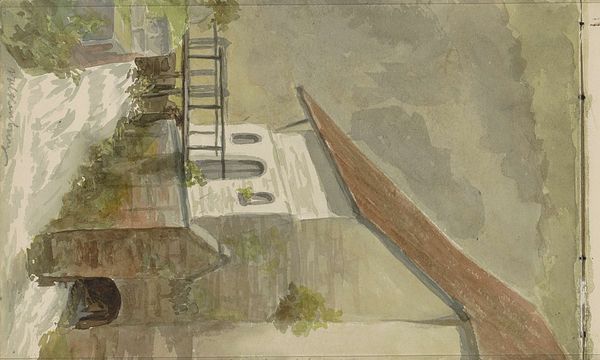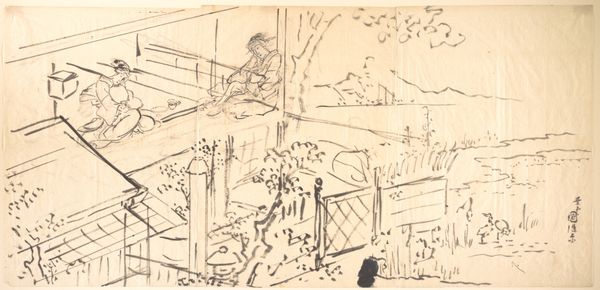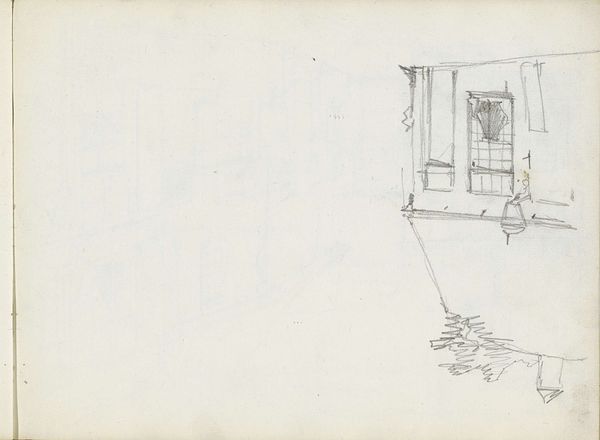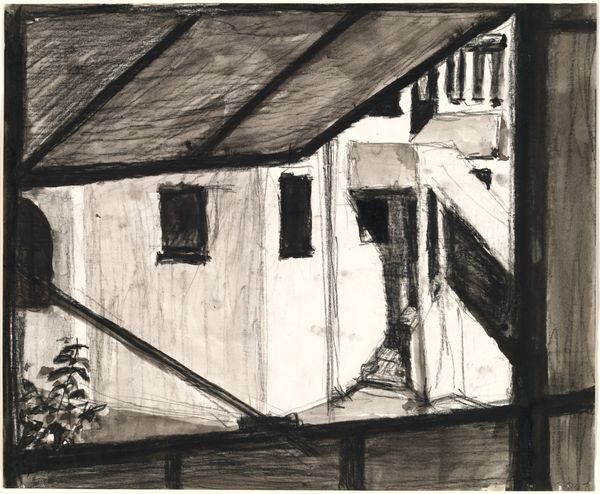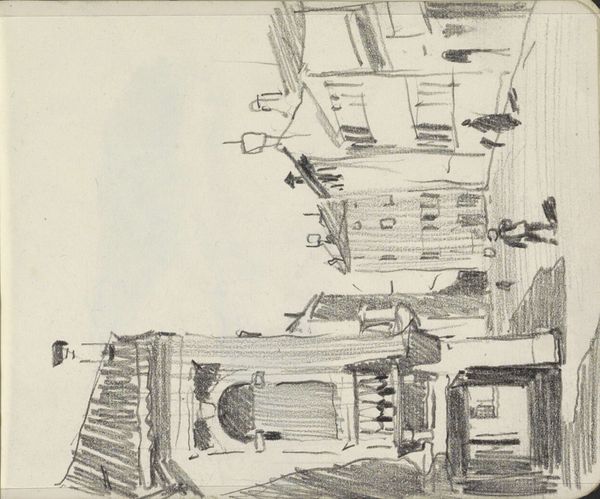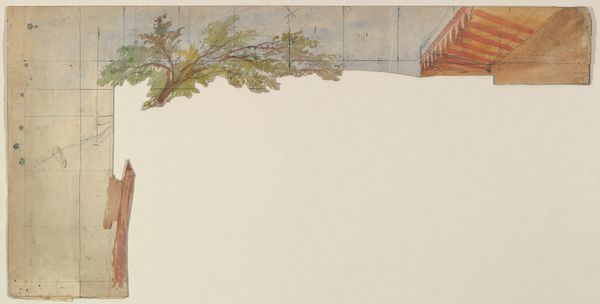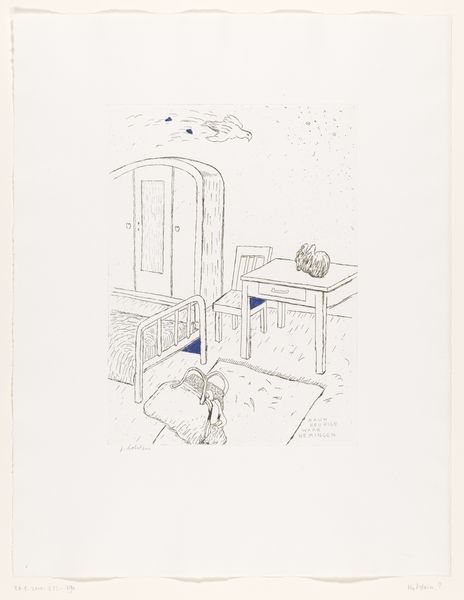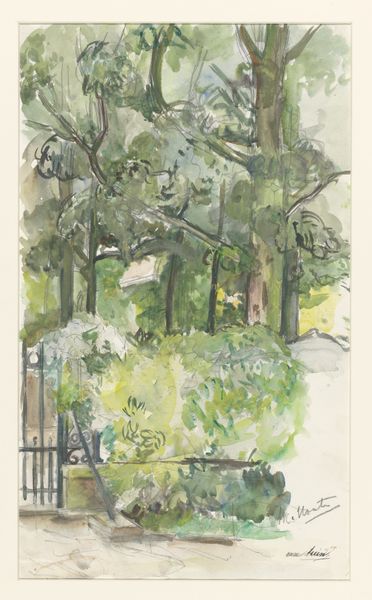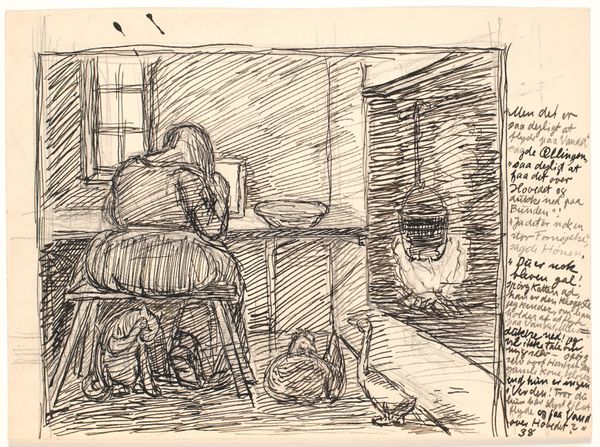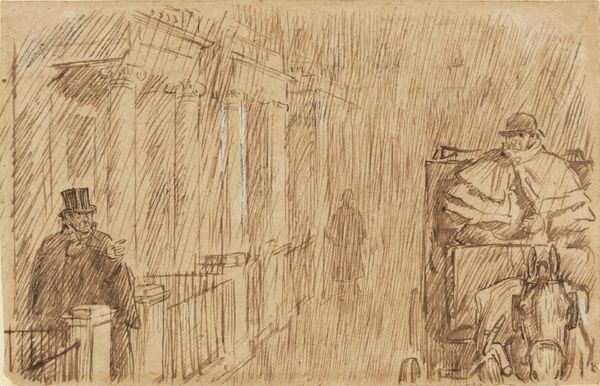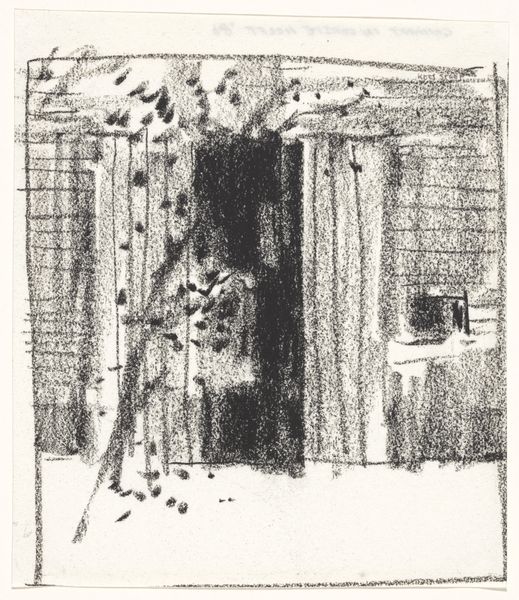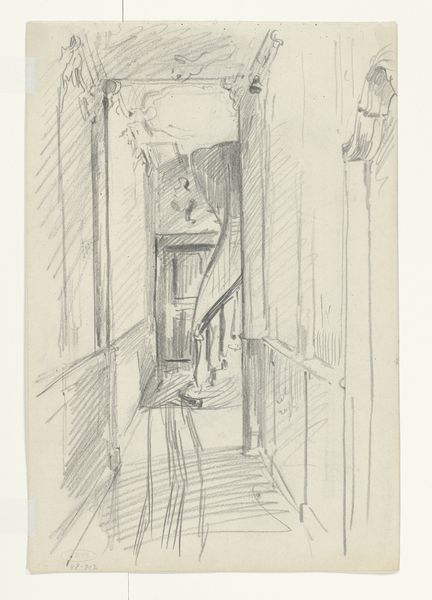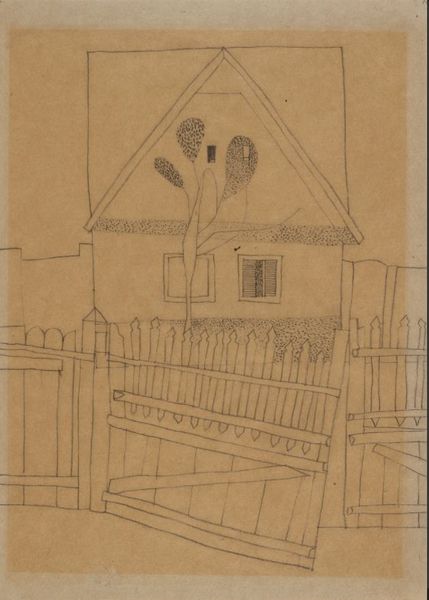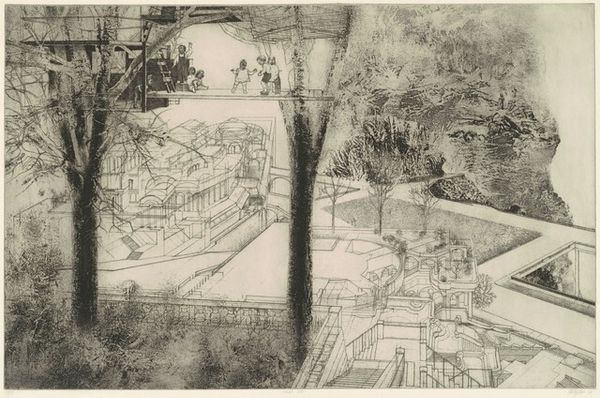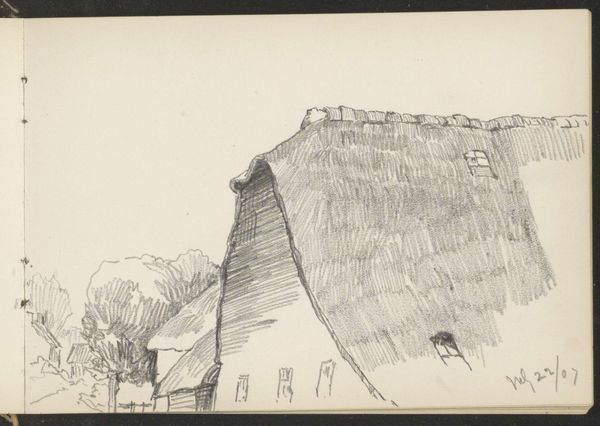
drawing, ink, pen
#
drawing
#
pen sketch
#
landscape
#
ink
#
geometric
#
pen
#
cityscape
#
realism
Dimensions: height 260 mm, width 285 mm
Copyright: Rijks Museum: Open Domain
Editor: This ink drawing, “Binnenplaats met houten hekken en tuintjes”—"Courtyard with wooden fences and gardens"—by Carel Adolph Lion Cachet, probably made sometime between 1874 and 1945, presents this almost bird’s eye view of what looks like a maze of backyards. It’s quite detailed, but it gives me a slightly unsettling feeling, almost like an invasion of privacy. What do you see when you look at it? Curator: You know, that feeling of unease is something I also sensed. It's the strange intimacy created by that elevated perspective – peering into these private spaces, these little contained worlds. The fences are interesting to me. It's such a rigid geometry defining these little green spaces. Fences are fascinating boundaries. What do they protect? What do they hide? Editor: I guess they separate neighbors. Are these backyards typical of the Netherlands during that period? Curator: To some extent, yes. These smaller garden plots became common in urban areas. Remember, even amidst industrialization, the Dutch maintained a deep connection to the land, to cultivating something, even on a miniature scale. There’s something lovely about that resilience. What about you? Do you have a garden? Editor: Not currently, sadly. Just a few potted plants. It's made me consider how fences delineate more than just space; they're social structures made visible. Curator: Precisely! Cachet, through what appears as this fairly straightforward city scene, seems to make us question how we define the concept of living "apart together." And the technique… the confident strokes of ink defining complex arrangements. It’s beautifully unsettling, don’t you think? Editor: Definitely. The details made the ordinary strange in my eyes. Now it all seems more symbolic than when I first saw it.
Comments
No comments
Be the first to comment and join the conversation on the ultimate creative platform.
